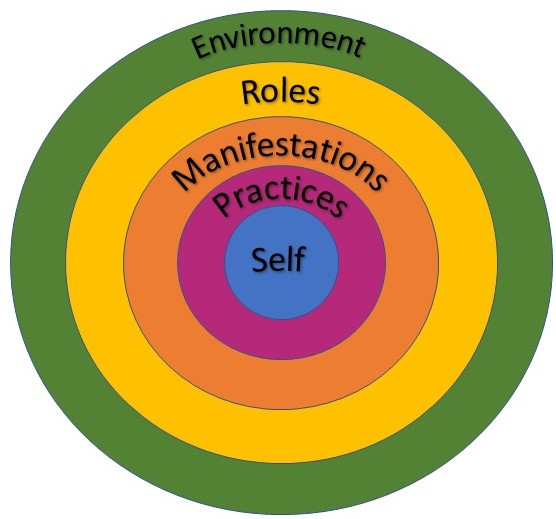The outermost circle of the Integrated Life Framework is the Environment, which I define as: The physical and psychological space we interact in. Our environment influences us and shapes us. We also can change our environment and create better opportunities for ourselves.
Do you believe that? It is easy to forget, even when you’re not seeing the results you want. Sometimes it is a subconscious assumption, “that’s the way things are.” If you don’t realize you’re making that assumption, you end up changing yourself to adapt to the environment, which may not be the best thing.
Changing our environment can be liberating and refreshing, if the environment was the thing that needed changing. Let’s say you hate your job, so you change employers only to find out it wasn’t your boss that was the issue, but the type of work you do. You’ve wasted time and capital changing the environment when you needed to change your role.
So, before making the investment to change your environment, evaluate. Here is a three-step outline for doing that.
Consider the Environment as Layered
Deconstructing the environment into layers may help you understand what aspects you can and want to change.
- Physical. This is the built environment – your home, workplace, neighborhood, stores and businesses, the streets, etc. How does that environment impact you and shape you? You might include the metaverse in this category.
- Relational. This is your friend group, colleagues and mentors, and all the other relationships you maintain. I also include organizational relationships here (e.g., boss, employees, etc.).
- Emotional. This is a little less concrete, but I describe it as the non-physical dynamics. Examples include the family dynamic, the overall atmosphere at work, or the dynamic with your partner.
Consider Your Role in the Environment
Now take some time to consider your role in the environment. For a given role, what layers can you make changes in? Would that result in positive outcomes for you? Are there other layers of the environment where you can make changes to achieve your goals?
Understand Your Motivation for Change
Your motivation for change should be focused on you and your desires, not others. Take some time to consider why you want the change and if that motivation is to help meet your needs, or for some other reason. For instance, spite and vengeance might fire you up, but probably aren’t healthy motivations.
To clarify, I’m talking about change to support your personal development and aspirations. You have ambitions to improve other people’s lives, your community, or society. Those are important, but different. The change I’m talking about here is what is going to give you energy so you can do good in the world.
Make Incremental Changes and Iterate
Now that you’ve spent some time thinking about your environment, maybe you have some ideas on how and what can change.
Is it something simple like changing the position of your desk or rearranging your living room? Maybe you plan to spend more time with people that are one step ahead of you in life stage. Is there a change you can make to create a more positive dynamic with your co-worker?
Whatever it is, change doesn’t have to be big to make an impact. Start small, see how it goes, and then do it again. Incremental change done over and over can lead to amazing results.
Start today and make Monday awesome! See you next week.

